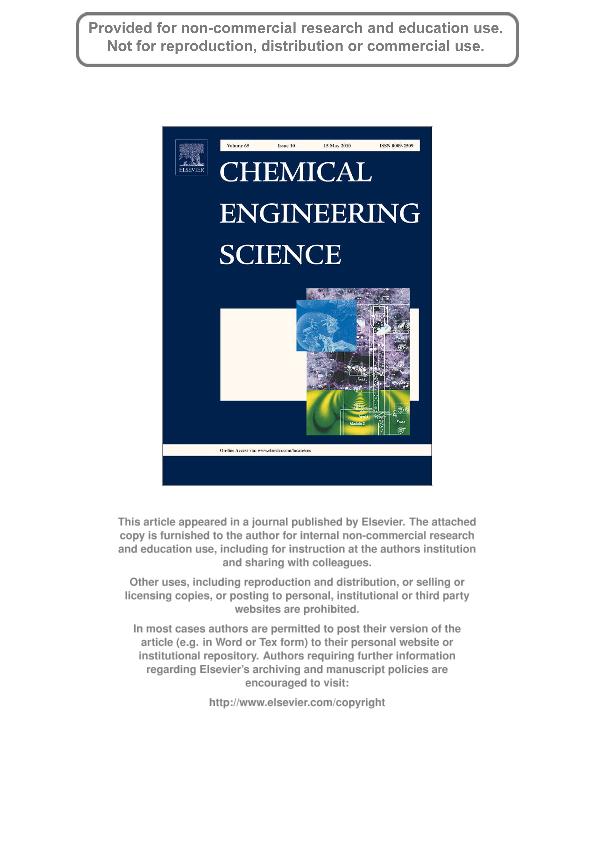Artículo
Numerical simulation of mass transfer in circulating drops
Fecha de publicación:
05/2010
Editorial:
Elsevier
Revista:
Chemical Engineering Science
ISSN:
0009-2509
Idioma:
Inglés
Tipo de recurso:
Artículo publicado
Clasificación temática:
Resumen
Numerical simulations of mass transfer are performed for a circulating liquid drop with applications in liquid–liquid extraction. Simulation parameters are chosen for a multi-component ternary system acetone–methanol–benzene. The drop circulation pattern is estimated via a truncated Galerkin representation of the drop streamfunction. Fickian diffusivities for multi-component mass transfer are obtained via Maxwell–Stefan theory with thermodynamic corrections. The advection–diffusion equations governing mass transfer are solved via two distinct numerical methods: a finite difference scheme (using the alternating direction implicit method) and a finite element scheme. Good agreement was obtained between both schemes. Simulation results are presented for a Reynolds number (Re=30) and for a selection of Peclet numbers (Pe=100, 1000 and 10 000, thereby giving insight into the effects of increasing Peclet number). The numerical simulations of the full advection–diffusion equations are compared against predictions of a rigid drop model (i.e. without circulation) and also against predictions of a semi-analytical boundary layer model developed by Uribe-Ramirez and Korchinsky. Results for bulk mass fractions reveal that the rigid drop model predictions evolve too slowly, while the boundary layer model predictions evolve much more quickly than the numerical simulations. Advection–diffusion simulation results for the evolution of mass fractions at selected individual locations in the drop show that points on streamlines nearest to the drop surface and/or drop axis evolve fastest, while those closest to the drop internal stagnation point evolve slowest. Corroborated by contour plots of component concentrations throughout the drop at selected times, this supports a picture whereby mass fractions become roughly uniform along individual streamlines, but mass is transferred diffusively from streamline to streamline.
Archivos asociados
Licencia
Identificadores
Colecciones
Articulos(INTEC)
Articulos de INST.DE DES.TECNOL.PARA LA IND.QUIMICA (I)
Articulos de INST.DE DES.TECNOL.PARA LA IND.QUIMICA (I)
Citación
Ubal, Sebastian; Harrison, C. H.; Grassia, P.; Korchinsky, W. J.; Numerical simulation of mass transfer in circulating drops; Elsevier; Chemical Engineering Science; 65; 10; 5-2010; 2934-2956
Compartir
Altmétricas




